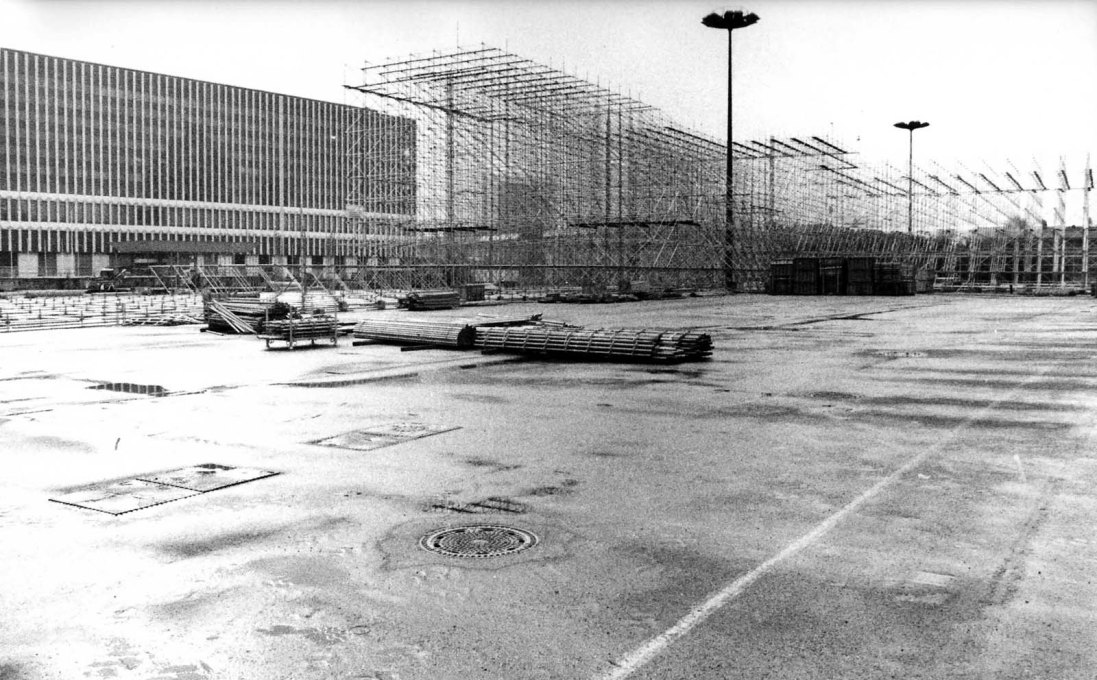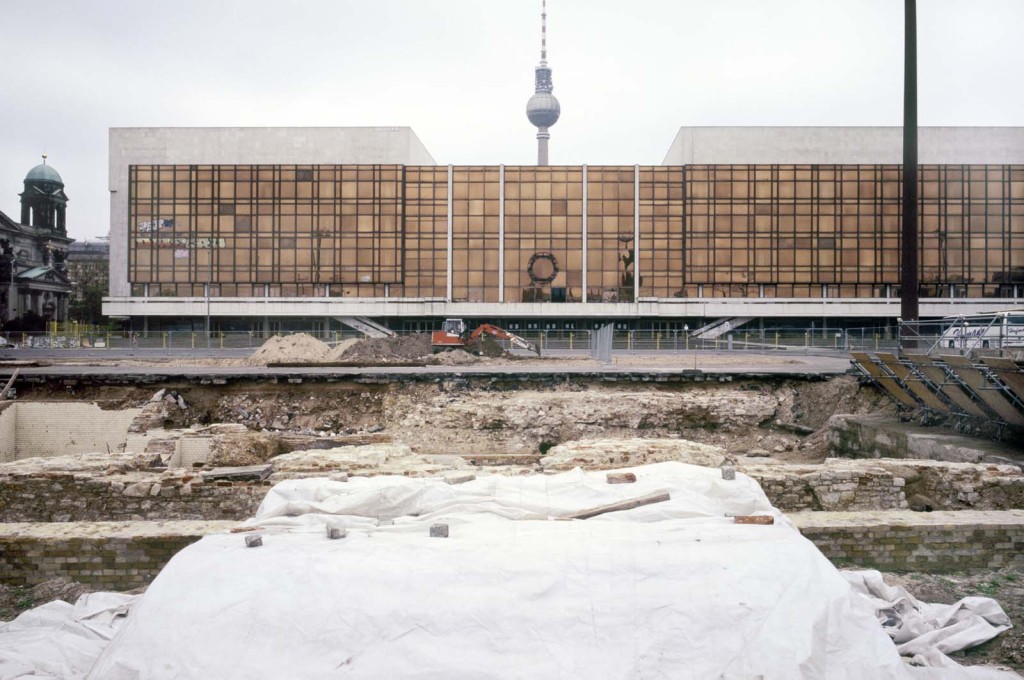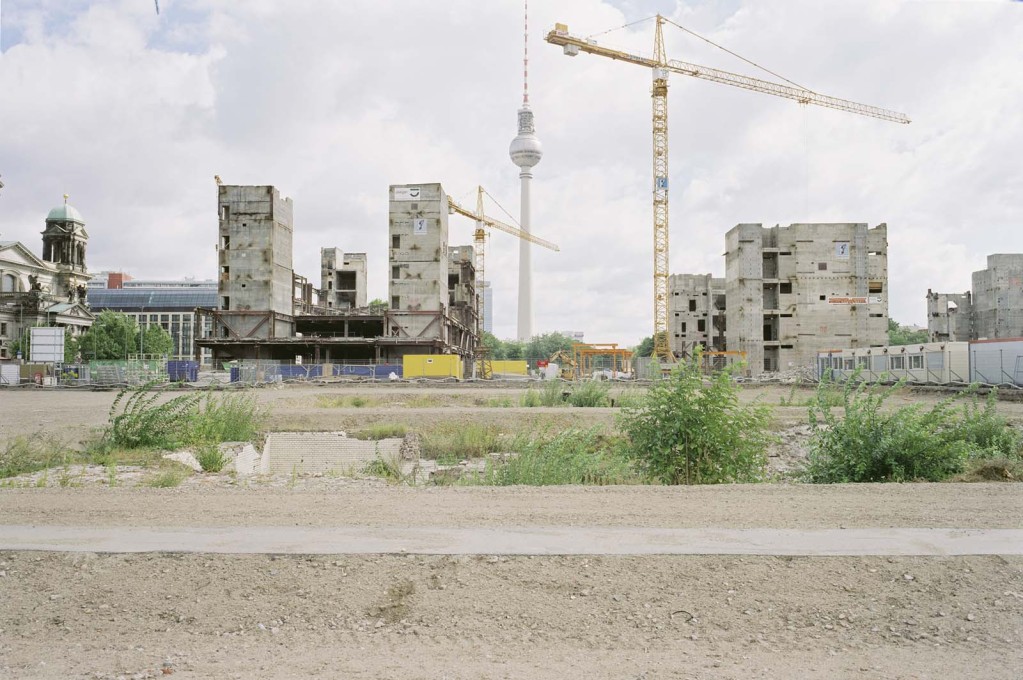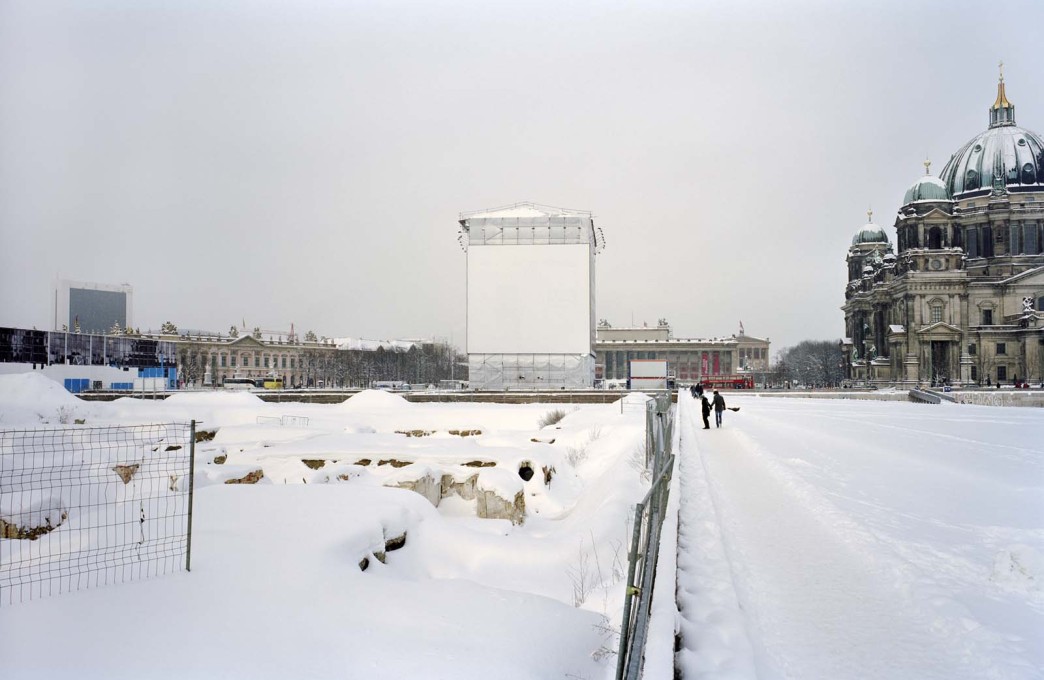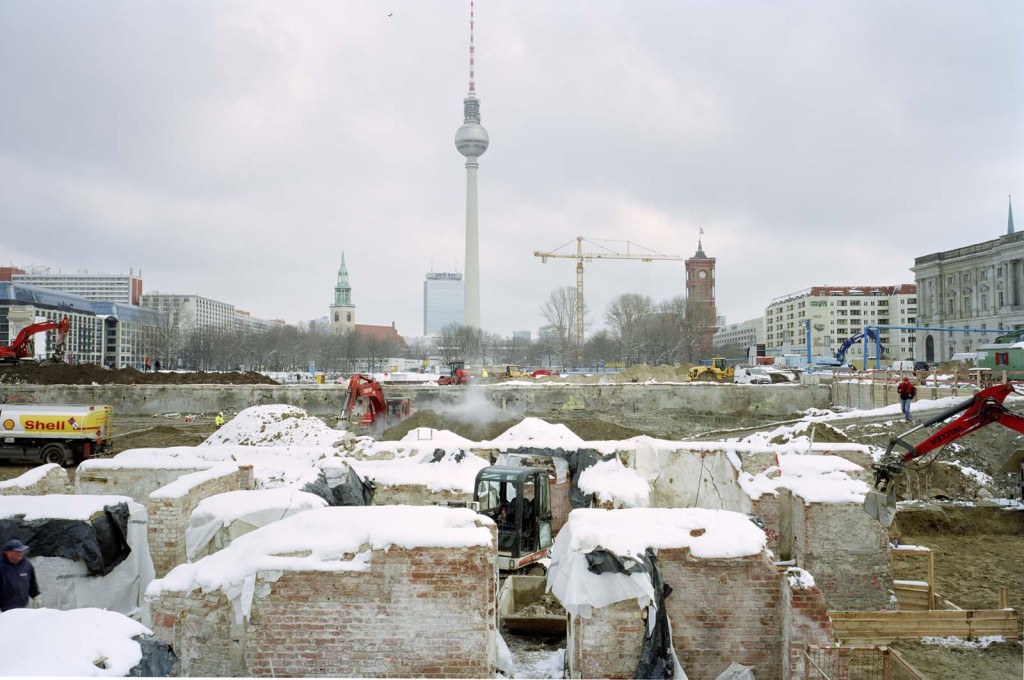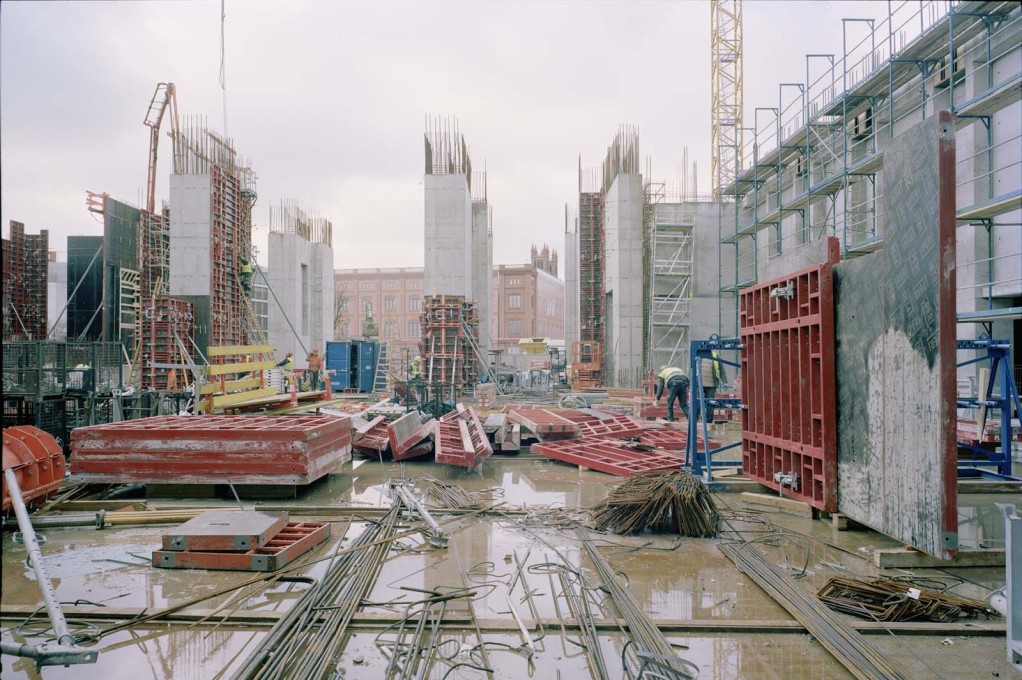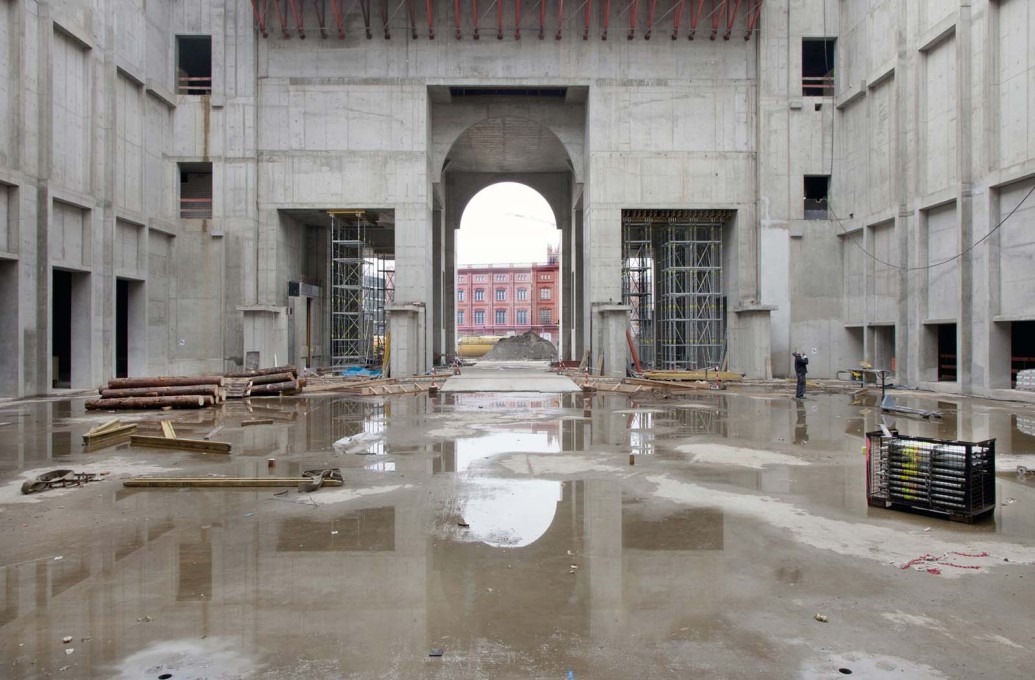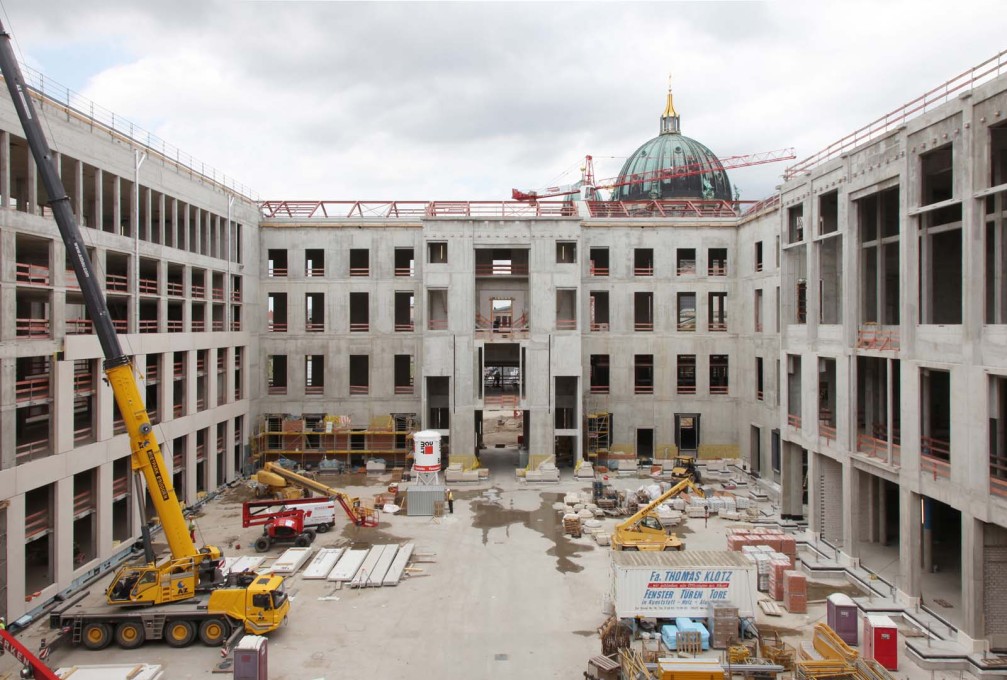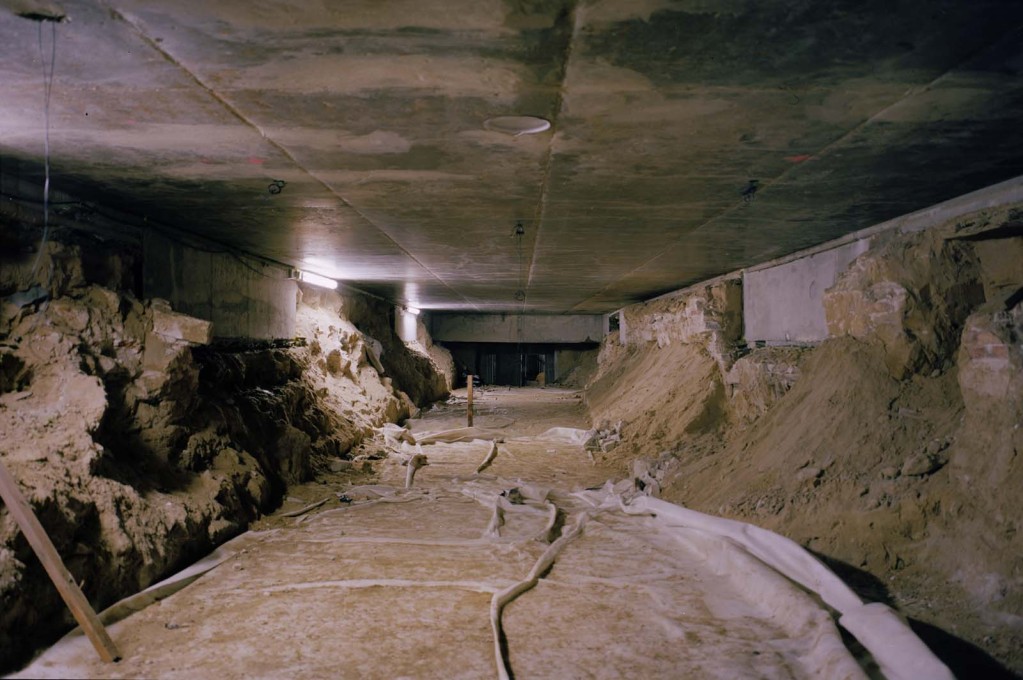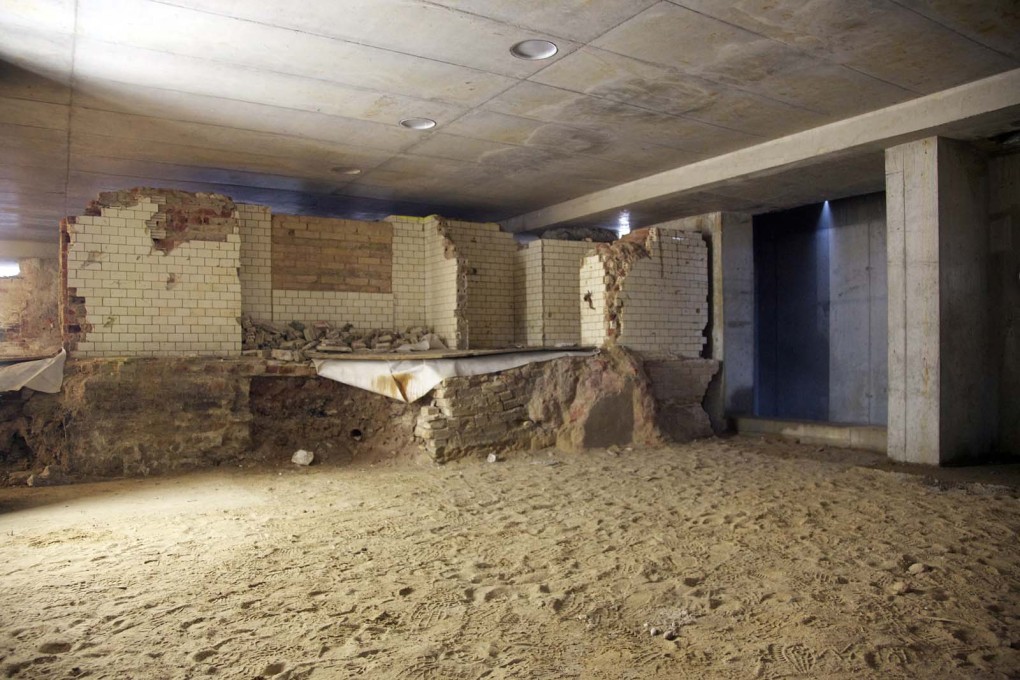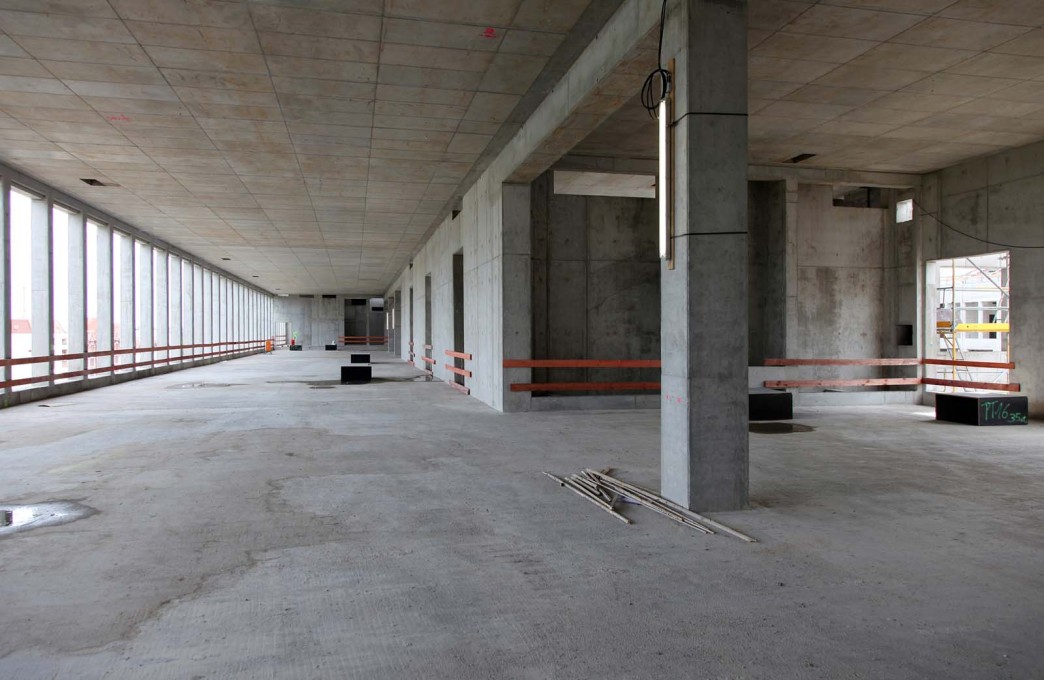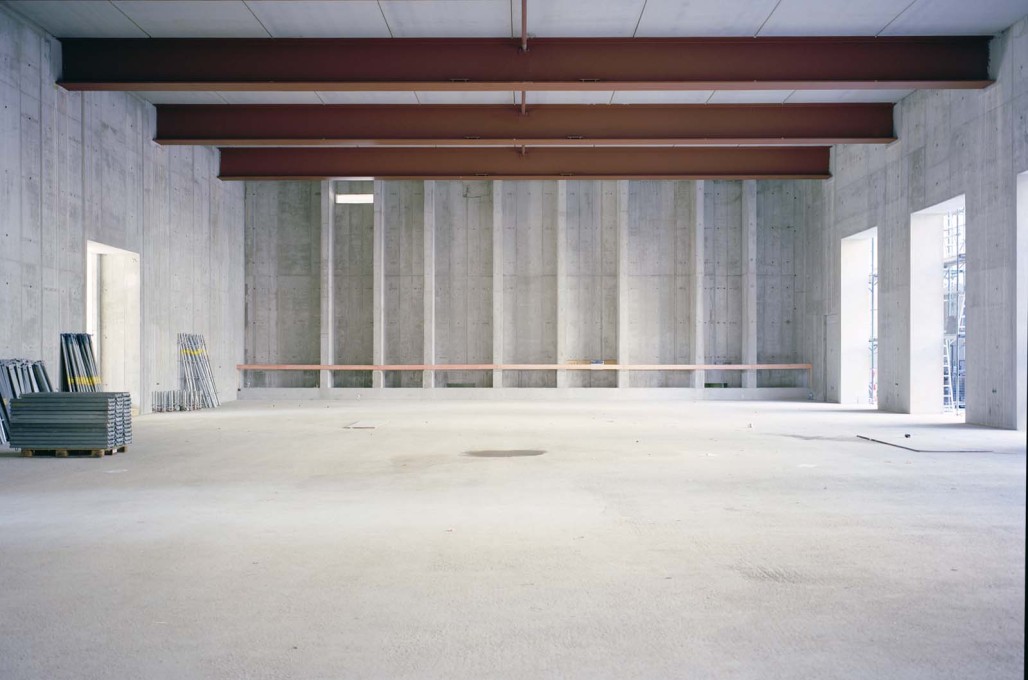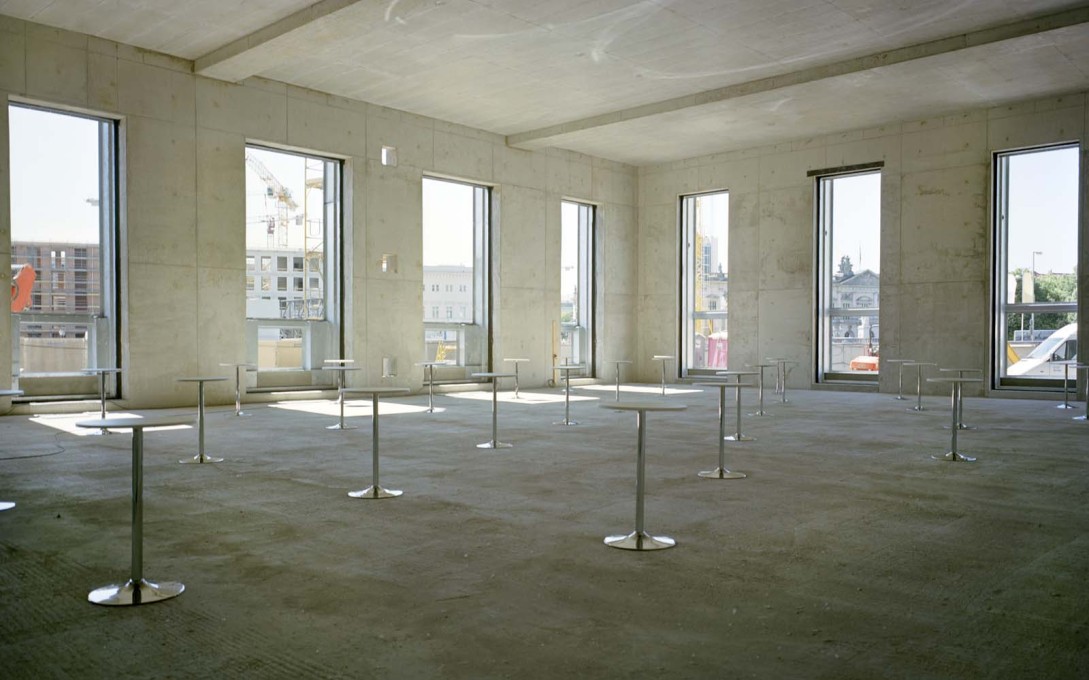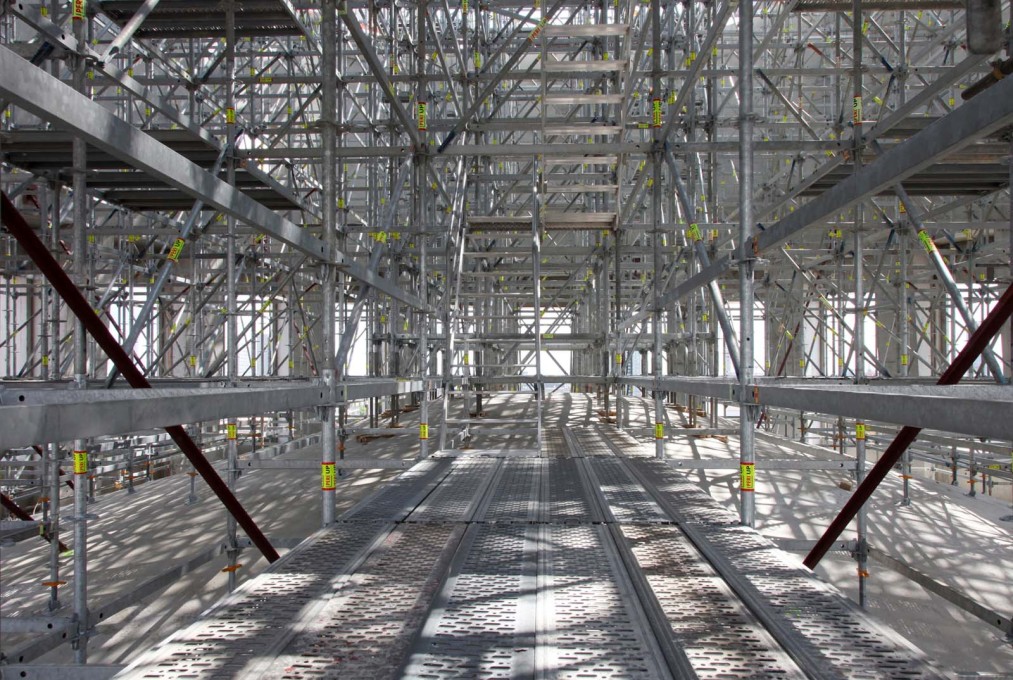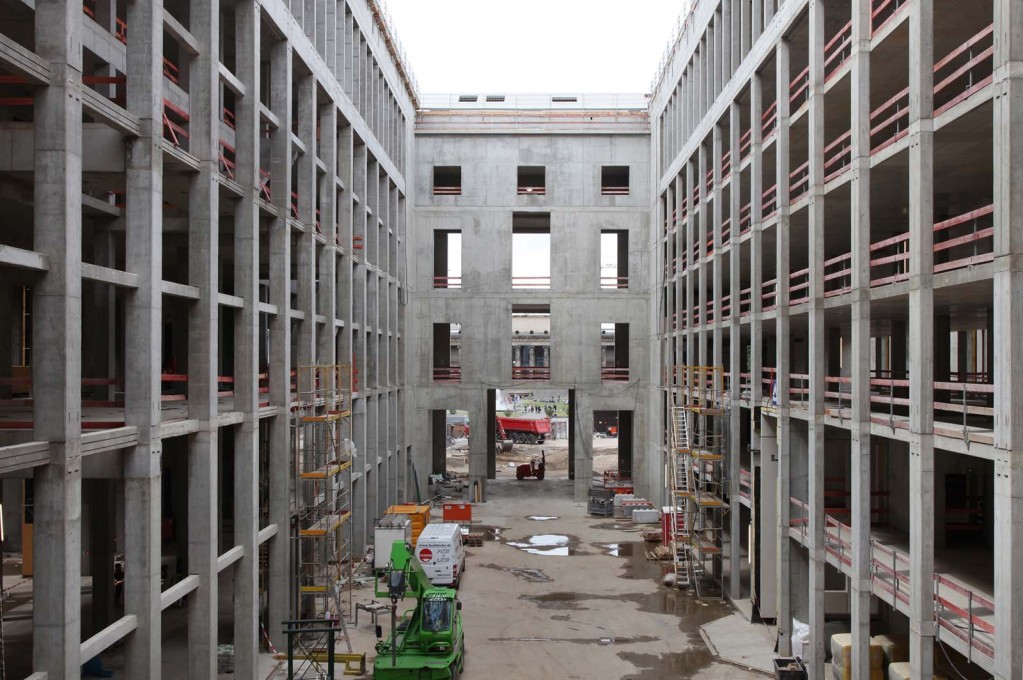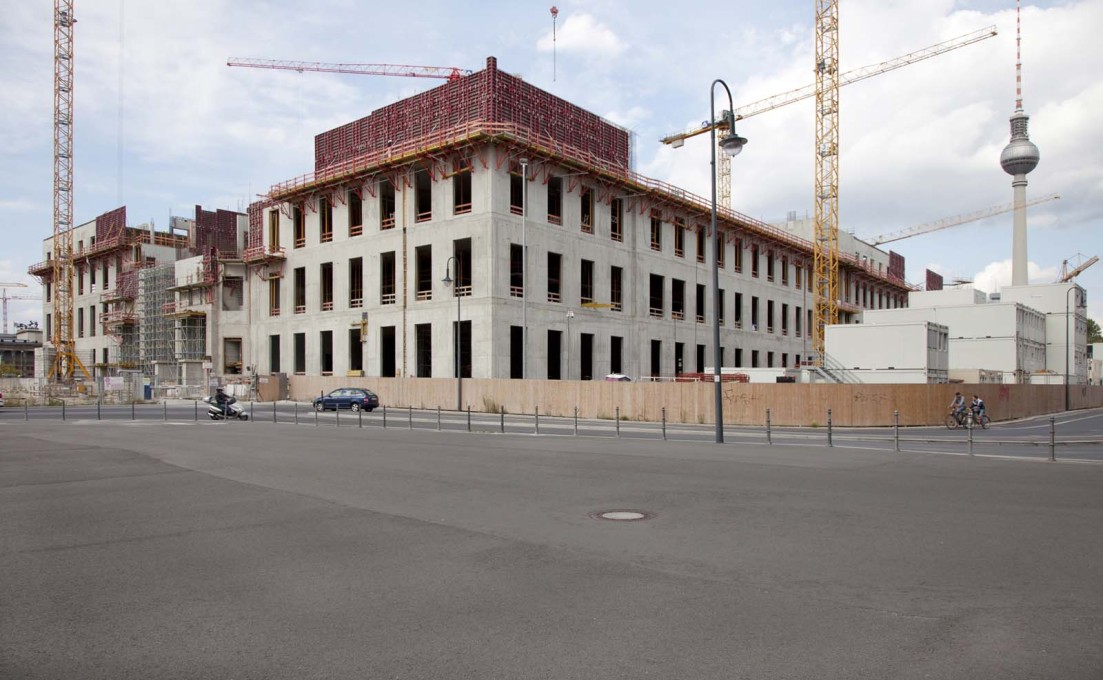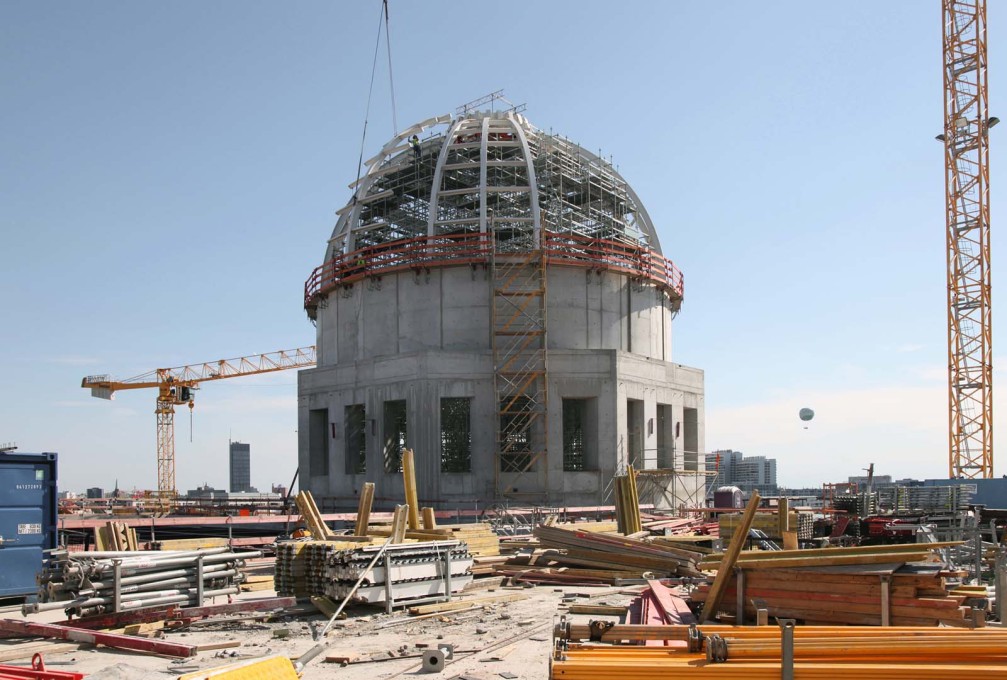Since moving back to Berlin from Paris in 1992, Stefanie Bürkle has been fascinated by the speed, scale and scope of transformation of the city’s centre in the years since German reunification. Though Bürkle is primarily a painter and scenographer, she started to take analogue photographs of the construction and demolition frenzy around her. Her passion for the subject over the past 25 years has resulted in an enormous artistic archive of the city’s remodelling. uncube met this urban transformation enthusiast in her studio to talk specifically about the controversial new pseudo-historic palace currently being (re)built in the very heart of Berlin.
How did you become interested in the fiercely disputed reconstruction of Berlin’s Stadtschloss, the historic city palace of the Prussian kings torn down by the German Democratic Republic [GDR], or East Germany, in 1950? It seems you have been visiting the site quite a lot over the past ten years or so.
Actually, I was interested in the area long before there was talk of reconstructing the Schloss. In 1992, when I returned to Berlin from Paris as an art student, I became totally fascinated by the massive reconstruction taking place in the inner city. I was particularly struck by the rapid upheaval: how many buildings and places disappeared and how quickly what used to be there was forgotten. I was a painter, but I began to capture these situations of change using a medium-format camera, as a kind of “archaeology of the present”. The subject had me hooked, and over the last 25 years I have been on nearly every construction site in Berlin’s city centre. The result is a kind of artistic survey of places such as Potsdamer Platz, the Reichstag building which was stripped to its core, the demolition of the GDR Foreign Ministry building and the construction of the underground parking garage beneath Bebelplatz with its subterranean memorial. Likewise, I followed the demolition of the Palast der Republik (Palace of the Republic), which led me to the reconstruction of the Schloss in its place.
Most construction sites are not publically accessible or easy to photograph. How do you gain access?
Yes, I was allowed to take pictures in parts of the city where photography was banned for security reasons, such as in the Reichstag and the Kanzleramt (German Chancellery). It certainly helped that I was not there as a journalist or documentary photographer, but as a painter. That gave me a certain artistic license.
The 18 photographs that you selected for uncube depict not only the construction phase of the Stadtschloss, but also date back to 1992, when the Palast der Republik and the GDR Foreign Ministry were still standing on what was then called Marx-Engels-Platz. How did you choose the pictures; what do they show us?
It was never my intention to document the building of the Stadtschloss. I see this series as part of my work on the reconstruction of the entire city centre. So the photographs do not present a chronological, linear narrative. What interest me are the lines of connection that occur between the images.
That’s why certain motifs appear again and again. They show the process of transformation and help to create something like storylines. Take, for example, the historic kitchen cellars of the Stadtschloss – the only part of the old city palace that survived its bombing and demolition and which will now be integrated into the basement of the new palace. In my series, you can see how they were first exposed, and then successively enveloped by the concrete walls. I also follow the tree trunks, used as timber joists, that are being temporarily used to stabilise the cellar ceilings while the heavy construction vehicles drive above them. In one photo, they are piled up in the courtyard; later we see them built into the basement like a bizarre, trimmed forest.
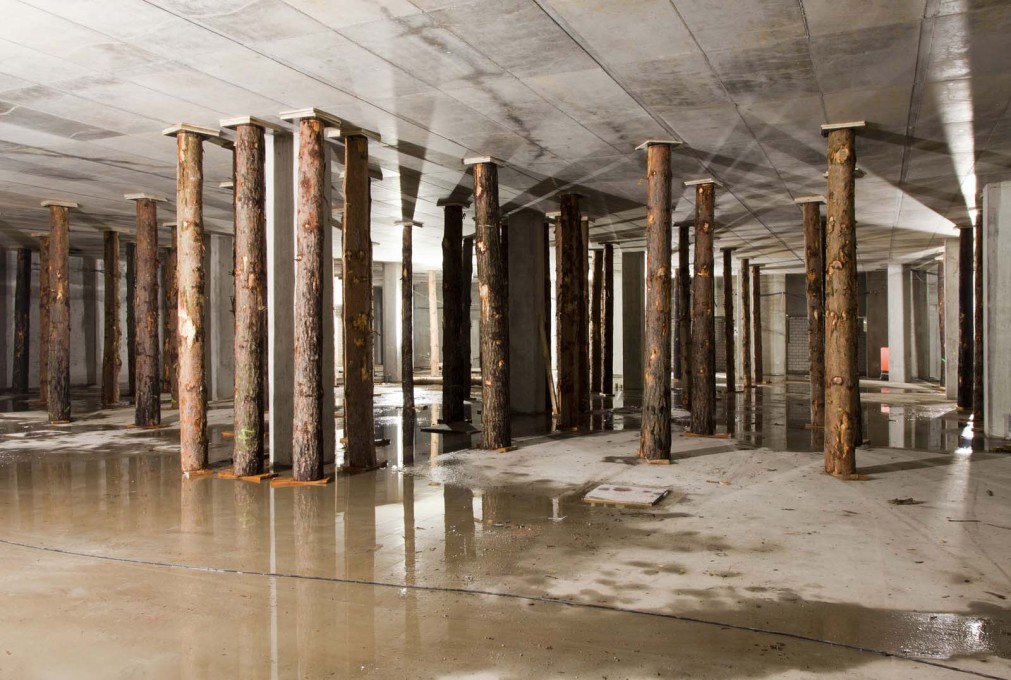
But such motifs are more like hidden ingredients in your pictures, and less a story that can be directly followed across several images.
That’s right. My photographs are not before-and-after photos, nor a cartoon or a flipbook. I don’t always stand at the same place for the same perspective. What is important to me is to capture each new situation as it requires. Every photograph has its own complete character – not as part of a series but as an autonomous image.
Anyone expecting a chronological series will inevitably be disappointed. I would be glad if viewers might become irritated, if someone would say, “wait a minute” and start to page back and forth because something seems off. It’s only when your expectations of an easy-to-understand documentation have been disappointed that you begin to look more closely.
How long are you going to continue this series?
The time of creation and growth is nearly over for the Stadtschloss. Now the technical infrastructure is underway, and its shell has now been covered by a historicising façade. This doesn’t really interest me any longer. What does are the fragile, fleeting, intermediate states of transformation, which find expression much more strongly in bare brickwork. I will likely go back on occasion, but without taking more pictures. Instead, I will search for the next areas of transition in this city. Just because the Schloss is done doesn’t mean that the city will stop changing.
– Interview by Florian Heilmeyer, translation by Alisa Kotmair.
Stefanie Bürkle (*1966), studied scenography in Paris and fine arts in Berlin. She produced stage designs for various theatres in Paris and Berlin. In her artistic practice, she uses painting, photography and interdisciplinary projects to explore themes as “transformation”, “stage” or “façade architecture”, rethinking common perceptions of the city.




